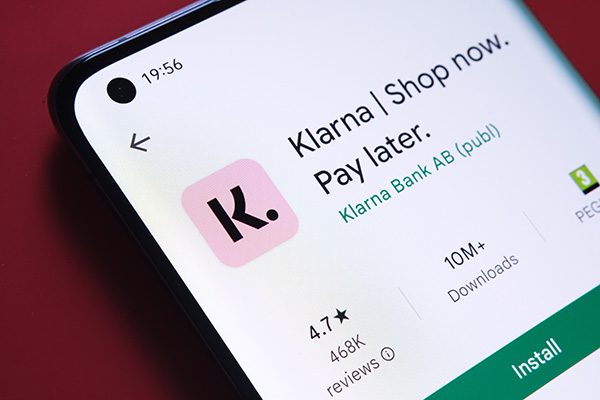
With more and more young people using BNPL as a payment option, Monica Eaton of Chargebacks 911 explores the benefits and risks of using this type of lending to make purchases.
Buy now, pay later (BNPL) service providers endured more than a few setbacks in 2022. Klarna, one of the biggest names in the financial services space, saw their valuation plummet from $46 billion at the beginning of last year to less than $7 billion by mid-July. That’s roughly an 85% decrease.
Investors see factors like a potential recession or a drop in consumer orders for big-ticket items as reasons for concern. Regardless, these issues have not reduced interest from consumers or merchants in utilising BNPL programs.
According to the 2022 Chargeback Field Report, merchants are keen to provide more alternative payment options in general, with the number of sellers offering BNPL plans to consumers growing by 20% in 2021.
BNPL made up nearly 2.5% of the global eCommerce market in 2021. Based on these projections, the instalment-payment market could top $550 billion within the next four to five years.
BNPL plans have been around for years. What we see today is basically a digital update of the once-popular layaway model, where retailers would pull a product and store it for a predetermined period while the customer paid in monthly instalments. The sale wasn’t considered complete until the final payment was made. At that point, the customer could pick up their order.
With contemporary BNPL payments, an outside provider like Klarna or PayPal partners with the retailer, allowing shoppers to split the cost of their purchases into multiple instalments. Aside from being outsourced, the biggest difference between layaway and BNPL is that the customer can get the merchandise before payment is made in full.
Additionally, consumers don’t have to worry about the additional costs typically associated with financing a purchase. While credit card payments are still king, paying by it also means incurring interest on any balance that rolls over from one month to the next. BNPL plans are gaining popularity –particularly among younger consumers – because they’re convenient and have limited or no interest charges.
With BNPL charges, consumers get affordability as well as flexibility. Loans are short-term, typically repaid by a down payment and three more instalments over a period of several weeks or months. There’s no need to secure an ongoing line of credit from a bank.
Retailers benefit too. BNPL providers deliver immediate payment, even if the buyer pays the servicer in instalments. By offering an in-demand, low-hassle payment option, BNPL technology can be a customer magnet, helping merchants gain an edge over competitors who are slower to adapt. These positives help create the kind of positive customer experience that increases long-term customer value.
Like any emerging technology, a BNPL plan may still have some downsides.
For consumers, it is probably not going to do much to help your credit, because most providers don’t even report payment data to the credit bureaus. In fact, the only time most loans are reported is when the consumer misses a payment and the account is sent to collections, which means the only BNPL information being reported on one’s credit is the negative data.
Like many other payment options, BNPL plans are also susceptible to fraud and abuse. These threats would primarily come from two distinct threat sources: synthetic identity fraud and account takeover.
Synthetic identity fraud involves scammers cobbling together pieces of information stolen from real people. The fraudster invents a fake person that can be used to create a new account and complete purchases. Naturally, they have no intention of repaying the loan. And, because the fake identity was created solely to make the purchase, there’s little chance of tracking the culprit down.
In contrast, account takeover fraud occurs when a scammer obtains a user’s login information, either through phishing attacks or by buying it on the dark web. Having access to a genuine account means they can use BNPL options to purchase electronics, groceries, tools, travel, and more on any site that accepts that provider.
Plus, having payments stretched out over time gives fraudsters a wider field of opportunity to attack, and because the payment is delayed, the real owner of the account may not notice the fraud for weeks.
Access to a BNPL option might tempt consumers to spend beyond their means. Once the buyer begins making that bi-weekly outlay, they could start to feel the financial impact much more acutely than had been anticipated.
Buyer’s remorse is one of the leading causes of chargebacks in card-not-present eCommerce. The buyer comes to regret a purchase and sees a chargeback as an opportunity to quickly and easily recoup their funds. This type of chargeback misuse is a textbook example of first-party fraud.
BNPL may also be associated with another consumer practice that presents a growing threat to merchants known as return fraud. This happens whenever a buyer attempts to defraud a merchant through their return process, such as bricking, price switching and receipt fraud.
With the growing expectation of returnless refunds, buyers may see this as another opportunity to recover funds without needing to send the goods back.
These problems are getting worse with time. The 2022 Chargeback Field Report showed that two-thirds of surveyed merchants reported an increase in first-party (or ‘friendly’) fraud over the last three years.
Right now, the official regulation concerning BNPL is a bit of a mashup. The services are not subject to the same rules as traditional payment methods. Thus, economists worry about varying terms and conditions paired with limited checks and balances.
There has been some momentum on this front. The US Consumer Financial Protection Bureau announced it was looking into BNPL as early as December 2021 with the goal of possibly creating regulations to protect consumers.
In the meantime, the onus is on buyers to carefully consider their budget over the duration of payment before completing a BNPL purchase. This will help them avoid financial predicaments by ensuring they can make the payments agreed to at the time of purchase.
It’s also important for consumers to understand any fees, including penalties for late payments, that they might accrue when taking advantage of BNPL options.
More regulation will likely be necessary as BNPL matures into a conventional, standard payment option. The model could present major problems if left without needed oversight.
If consumers are unable to pay back what they owe, BNPL providers could find their balance sheets suddenly weighed down by the burden of increased debt. Depending on the degree of integration these companies have with conventional financial institutions, this could create a cycle of credit lock-up akin to what was observed in 2008. At the very least, it could shake consumer confidence, putting the stability of global markets at risk.
The bottom line: both merchants and consumers appreciate the flexibility and convenience of BNPL, but they must have a mutual understanding of the terms of service. Otherwise, this bold new direction for commerce could spiral into a problem for payments and finance writ large.

Monica Eaton is founder and CEO of Chargebacks911.
The Payments Association
St Clement’s House
27 Clements Lane
London EC4N 7AE
© Copyright 2024 The Payments Association. All Rights Reserved. The Payments Association is the trading name of Emerging Payments Ventures Limited.
Emerging Ventures Limited t/a The Payments Association; Registered in England and Wales, Company Number 06672728; VAT no. 938829859; Registered office address St. Clement’s House, 27 Clements Lane, London, England, EC4N 7AE.







Log in to access complimentary passes or discounts and access exclusive content as part of your membership. An auto-login link will be sent directly to your email.
We use an auto-login link to ensure optimum security for your members hub. Simply enter your professional work e-mail address into the input area and you’ll receive a link to directly access your account.
Instead of using passwords, we e-mail you a link to log in to the site. This allows us to automatically verify you and apply member benefits based on your e-mail domain name.
Please click the button below which relates to the issue you’re having.
Sometimes our e-mails end up in spam. Make sure to check your spam folder for e-mails from The Payments Association
Most modern e-mail clients now separate e-mails into different tabs. For example, Outlook has an “Other” tab, and Gmail has tabs for different types of e-mails, such as promotional.
For security reasons the link will expire after 60 minutes. Try submitting the login form again and wait a few seconds for the e-mail to arrive.
The link will only work one time – once it’s been clicked, the link won’t log you in again. Instead, you’ll need to go back to the login screen and generate a new link.
Make sure you’re clicking the link on the most recent e-mail that’s been sent to you. We recommend deleting the e-mail once you’ve clicked the link.
Some security systems will automatically click on links in e-mails to check for phishing, malware, viruses and other malicious threats. If these have been clicked, it won’t work when you try to click on the link.
For security reasons, e-mail address changes can only be complete by your Member Engagement Manager. Please contact the team directly for further help.